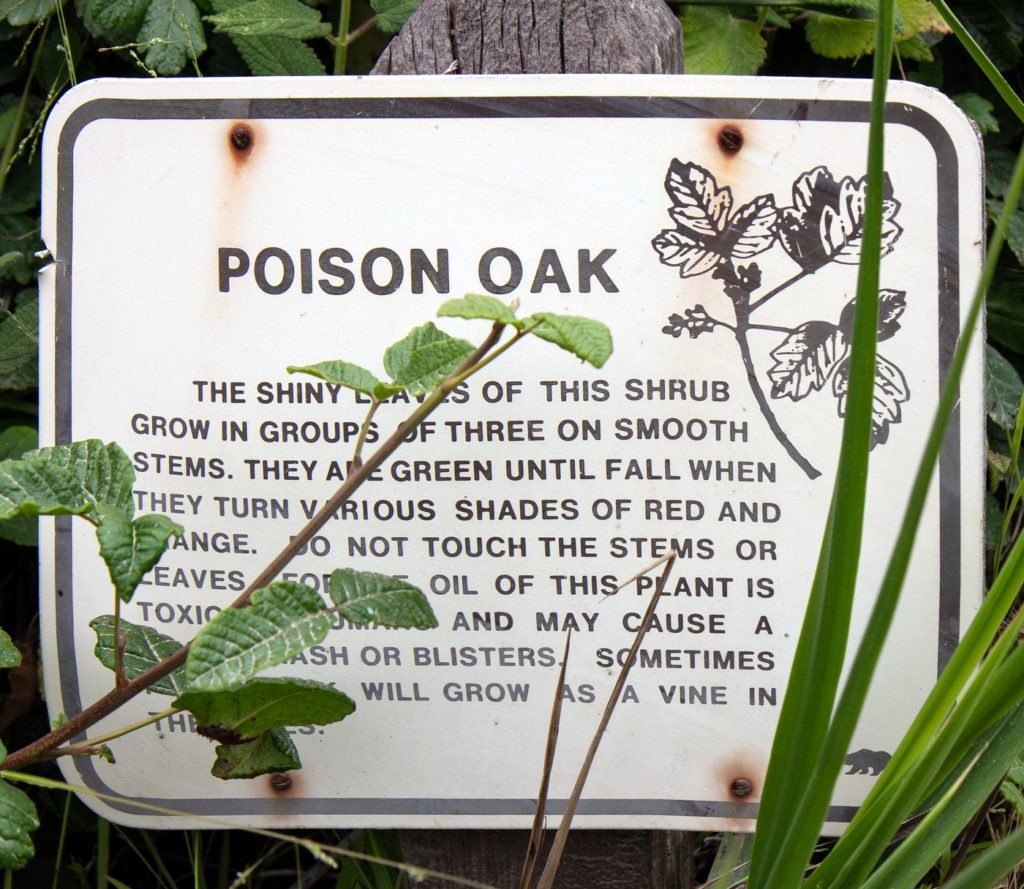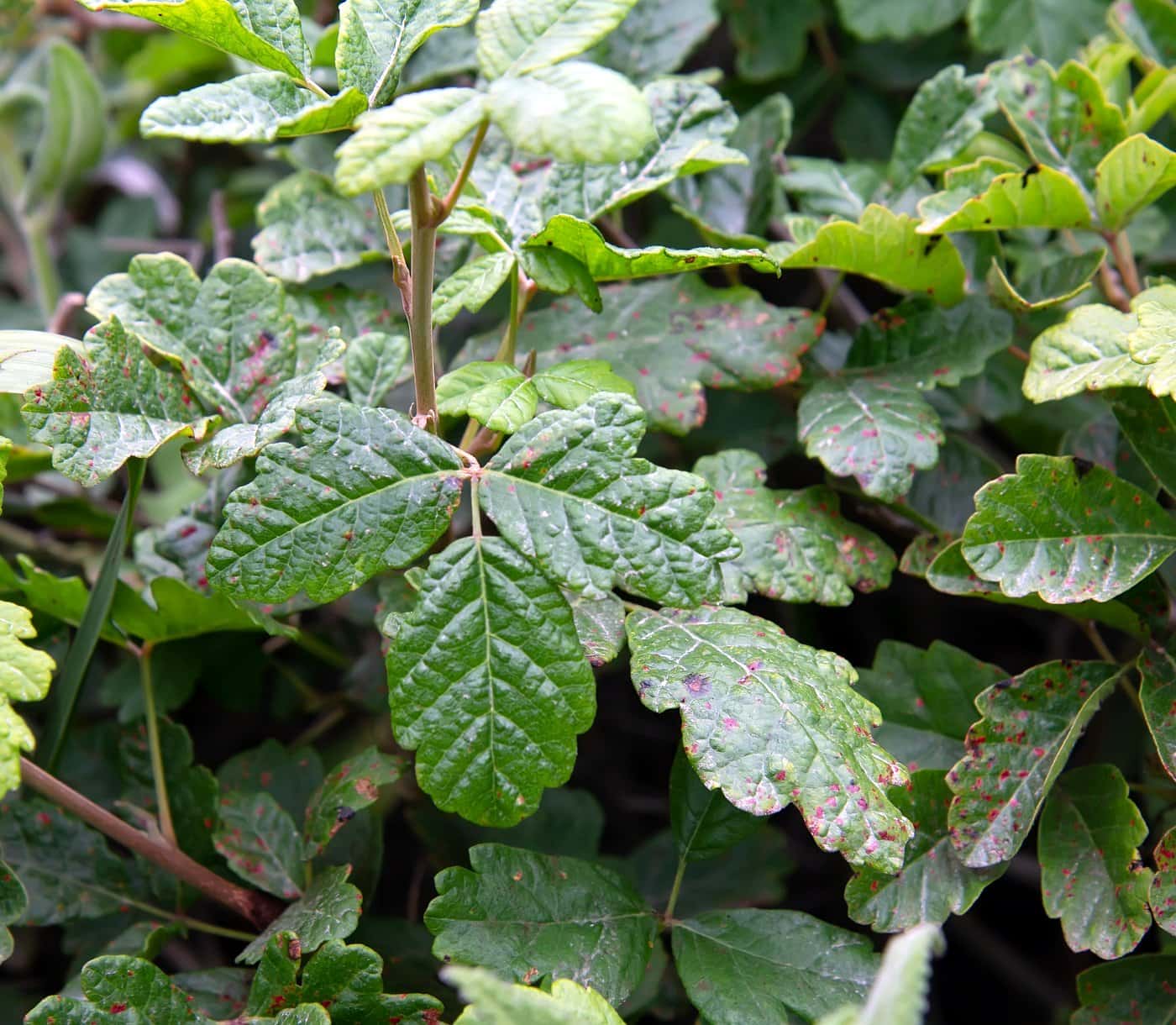How can you avoid a rash from poison oak?
“I’ve been invited on a hiking and camping trip in a wooded area a few hours away. I’m a little nervous because the last time I took a trip like that, I came home with the worst poison oak rash ever! I was so miserable for almost two weeks, there is no way I want to repeat that. Is there some sure-fire way to avoid the horrible, itchy rash?”
Avoiding the dreaded poison oak
Your very first contact with poison oak and its brethren earns you a get out of jail free card — with a catch. You won’t develop a rash with that first touch… but you become sensitized to the oils in the sap, and will likely experience a reaction the next time you are exposed.
The Drug Information Center in the Department of Pharmaceutical Services at the UCLA Medical Center says, “allergic contact dermatitis develops usually within 24 to 48 hours of exposure in previously-sensitized individuals.”
ID the culprits
The first step to dealing with the possiblity of a poison oak rash is figuring out a way to avoid it in the first place. This is actually harder than it sounds (take it from someone who has suffered for her lack of knowledge) because the plant’s looks vary with the seasons, and may be covered by other plants and brush.
The saying, “Leaves of three, let them be” is a nice guideline, and hints like “Pacific poison oak may be vine-like,” and “May have yellow or green flowers and clusters of green-yellow or white berries” are also helpful, but you can look above and see more images of poison oak & ivy here.
Still, knowing how to ID the plant should be only part of your tactical plan.
The barrier method
When you’re in areas where there might be poison oak (or poison ivy), wear long sleeves, long pants, boots and gloves. Barrier skin creams, such as a lotion containing bentoquatum, may offer some protection if applied before contact.
If you come into contact with poison ivy, oak or sumac, wash your skin as soon as possible with cold, running water. And hurry! Do this within minutes of coming into contact with the plant to prevent the oil from absorbing into the skin. (The faster you remove the plant oils, the less severe your reaction will be.)
Avoid vigorously scrubbing the area or using hot water right after exposure, since these may further open pores or cause more irritation to the skin.
What about soap? Advice from the experts is mixed. Some say don’t use soap, others recommend it — and some say wash with cold water only as soon as possible, then use soap in a warm shower as thereafter.
Also remember to wash the clothing and shoes you were wearing when you came into contact with the poison ivy immediately after discovering (or suspecting) a breakout, so you don’t spread the rash all over your body.

What’s the problem?
Touching the stems, roots, or leaves of poison oak, poison ivy or poison sumac usually puts your skin in direct contact with urushiol oil — which is naturally produced by the plant — and that oil is nasty stuff. The Texas Department of Insurance reports that just one nanogram (a billionth of a gram) is needed to cause a rash, and the average person is exposed to 100 nanograms per exposure.
The key to not getting the rash — even if you are exposed — is taking quick action.
Jeff Iles, Extension Horticulturist at Iowa State University Extension says, “Once urushiol touches the skin, it begins to penetrate in minutes. In fact, usually within 10 to 15 minutes of contact, urushiol binds to skin proteins. If the sap can be washed off before that time — rubbing alcohol followed by plenty of cold water — a reaction may be prevented.”
The National Parks Service says a commercially-available product that seems to be effective in removing the sap for two or more hours is called Tecnu.
Here’s what to do if you think you have been in contact with poison oak or poison ivy:
- Immediately clean the affected areas with rubbing alcohol, then wash with cold water.
- When you can fully undress, take a shower with warm water.
- Wash your clothing and other items with laundry detergent and hot water (you might want to run it through twice, or add an extra rinse).
- Wearing disposable vinyl or nitrile — the oil can penetrate rubber — gloves, clean any non-launderable materials (boots, tools, etc) with rubbing alcohol, then dispose of the gloves and cleaning materials used. The CDC reports that urushiol can remain active on the surface of objects for up to 5 years.
Up to fifteen percent of the population never develops an allergy to urushiol, says Christina Marino, MD, MPH, a dermatologist with the Washington State Department of Labor and Industries’ Safety and Health Assessment and Research for Prevention.
She also notes that a person’s sensitivity changes over time — as you grow older, you may become less likely to experience a rash from poison oak, ivy or sumac.







